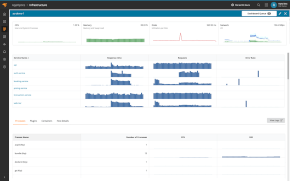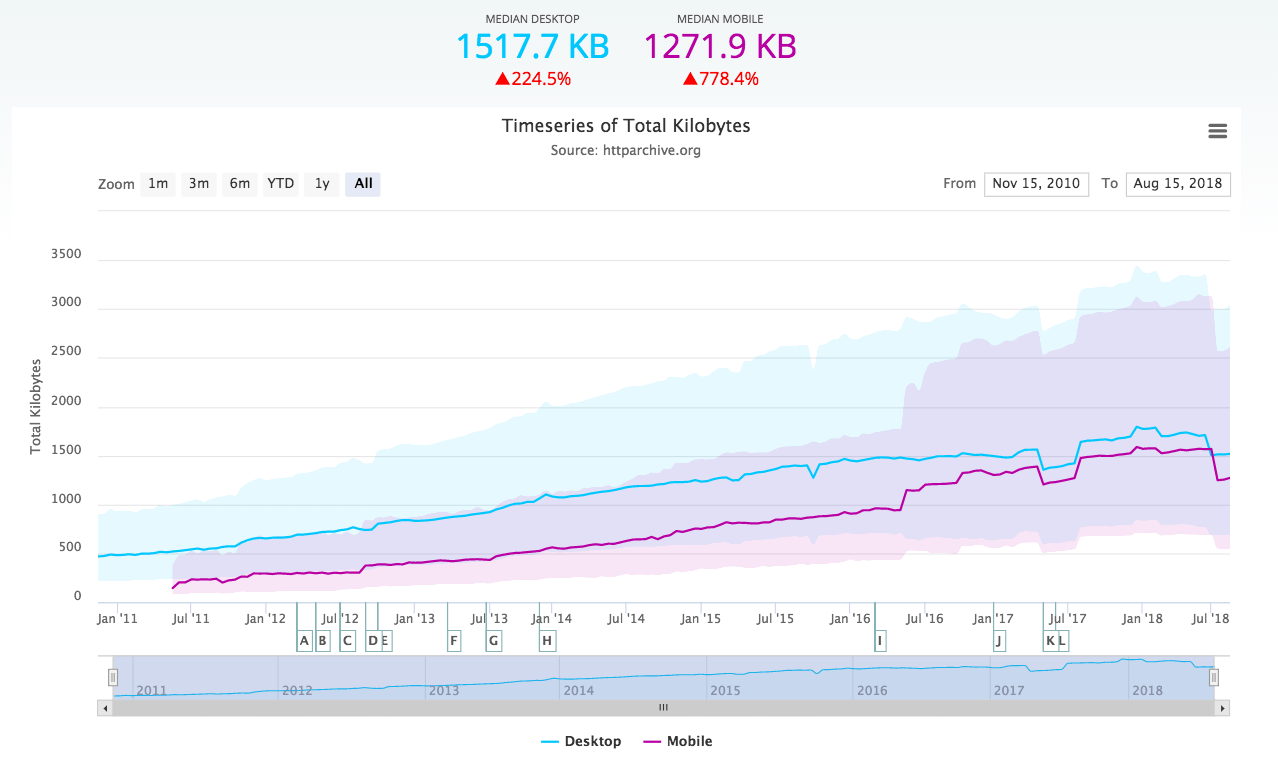![]() At the scale that Facebook operates, several traditional approaches to serving web content break down or simply aren’t practical.
At the scale that Facebook operates, several traditional approaches to serving web content break down or simply aren’t practical.
The challenge for Facebook’s engineers has been to keep the site up and running smoothly in spite of handling over two billion active users. This article takes a look at some of the software and techniques they use to accomplish that.
Facebook’s Scaling Challenge
Before we get into the details, here are a few factoids to give you an idea of the scaling challenge that Facebook has to deal with:
- Facebook had 2.96 billion users as of Q4 2022 (the service is available in over 100 languages)
- Every 60 seconds: 317 thousand status updates are added, 147 thousand photos are uploaded, and 54 thousand links are shared on Facebook
- Facebook users generate 8 billion video views per day on average, 20% of which are live broadcast
- In 2021, Facebook had 40 million square feet of data center space among its 18 campuses around the globe that host millions of servers.
One interesting fact is that even at this enormous scale, Facebook (Meta) data centers are supported by 100% renewable energy.
Check out this blog post to learn more stats on the most used social media platforms.
Software That Helps Facebook Scale
In some ways Facebook is still a LAMP site (kind of) which refers to services using Linux, Apache, MySQL, and PHP, but it has had to change and extend its operation to incorporate a lot of other elements and services, and modify the approach to existing ones.
For example:
- Facebook still uses PHP, but it has built a compiler for it so it can be turned into native code on its web servers, thus boosting performance.
- Facebook uses Linux but has optimized it for its own purposes (especially in terms of network throughput).
- Facebook uses MySQL, but primarily as a key-value persistent storage, moving joins and logic onto the web servers since optimizations are easier to perform there (on the “other side” of the Memcached layer). In 2022, Facebook migrated to MySQL 8.0
Then there are the custom-written systems, like Haystack, a highly scalable object store used to serve Facebook’s immense amount of photos, or Scribe, a logging system that can operate at Facebook’s scale (which is far from trivial).
But enough of that. Let’s present (some of) the software that Facebook uses to provide us all with the world’s largest social network site.
Memcached
 Memcached is by now one of the most famous pieces of software on the internet. It’s a distributed memory caching system that Facebook (and a ton of other sites) uses as a caching layer between the web servers and MySQL servers (since database access is relatively slow). Through the years, Facebook has made a ton of optimizations to Memcached and the surrounding software (like optimizing the network stack).
Memcached is by now one of the most famous pieces of software on the internet. It’s a distributed memory caching system that Facebook (and a ton of other sites) uses as a caching layer between the web servers and MySQL servers (since database access is relatively slow). Through the years, Facebook has made a ton of optimizations to Memcached and the surrounding software (like optimizing the network stack).
Facebook runs thousands of Memcached servers with tens of terabytes of cached data at any one point in time. It is likely the world’s largest Memcached installation handling billions of requests per second.
HipHop for PHP and HipHop Virtual Machine (HHVM)
 PHP, being a scripting language, is relatively slow when compared to code that runs natively on a server. HipHop converts PHP into C++ code which can then be compiled for better performance. This has allowed Facebook to get much more out of its web servers since Facebook relies heavily on PHP to serve content.
PHP, being a scripting language, is relatively slow when compared to code that runs natively on a server. HipHop converts PHP into C++ code which can then be compiled for better performance. This has allowed Facebook to get much more out of its web servers since Facebook relies heavily on PHP to serve content.
A small team of engineers (initially just three of them) at Facebook spent 18 months developing HipHop, and it was used for a few years. The project was discontinued back in 2013 and then replaced by HHVM (HipHop Virtual Machine).
https://developers.facebook.com/blog/post/2010/02/02/hiphop-for-php–move-fast/
Facebook dropped the long-standing PHP support in HHVM version 4.0 in response to PHP7’s higher performance upstream interpreter.
Haystack
Haystack is Facebook’s high-performance photo storage/retrieval system (strictly speaking, Haystack is an object store, so it doesn’t necessarily have to store photos).
It has a ton of work to do; there are more than 260 billion images Facebook, and each one is saved in four different resolutions, resulting in more than 20 petabytes of data. And the scale is constantly increasing, with users uploading one billion new photos each week or 60 terabytes of data.
And it’s not just about being able to handle billions of photos; web performance is critical. As we mentioned previously, Facebook users upload around 147,000 photos every minute which makes it 2,450 photos per second.
BigPipe
BigPipe is a dynamic web page serving system that Facebook has developed. Facebook uses it to serve each web page in sections (called “pagelets”) for optimal performance. This approach is similar to the pipelining in modern microprocessors where multiple instructions are piped through different execution units to maximize performance.
For example, the chat window is retrieved separately, the news feed is retrieved separately, and so on. These pagelets can be retrieved in parallel, which is where the performance gain comes in, and it also gives users a site that works even if some part of it would be deactivated or broken.
Cassandra (Instagram)
![]() Cassandra is a distributed storage system with no single point of failure. It’s one of the poster children for the NoSQL movement and has been made open source (it’s even become an Apache project). Facebook used it for its Inbox search.
Cassandra is a distributed storage system with no single point of failure. It’s one of the poster children for the NoSQL movement and has been made open source (it’s even become an Apache project). Facebook used it for its Inbox search.
Other than Facebook, a number of other services use it, for example Digg. We’re even considering some uses for it here at SolarWinds® Pingdom®.
Facebook abandoned Cassandra back in 2010 but the solution has been used at Instagram since 2012 replacing Redis.
Scribe
Scribe was a flexible logging system that Facebook used for a multitude of purposes internally. It’s been built to be able to handle logging at the scale of Facebook, and automatically handles new logging categories as they show up (Facebook has hundreds). As of 2019, Scribe’s GitHub repository states that this project is no longer supported or updated by Facebook which probably means that it’s not in use anymore.
Hadoop and Hive
![]() Hadoop is an open source map-reduce implementation that makes it possible to perform calculations on massive amounts of data. Facebook uses this for data analysis (and as we all know, Facebook has massive amounts of data). Hive originated from within Facebook, and makes it possible to use SQL queries against Hadoop, making it easier for non-programmers to use.
Hadoop is an open source map-reduce implementation that makes it possible to perform calculations on massive amounts of data. Facebook uses this for data analysis (and as we all know, Facebook has massive amounts of data). Hive originated from within Facebook, and makes it possible to use SQL queries against Hadoop, making it easier for non-programmers to use.
Both Hadoop and Hive are open source (Apache projects) and are used by a number of big services, for example Yahoo and Twitter.
For more information, check out the article on “How Is Facebook Deploying Big Data?”
Apache Thrift
Facebook uses several different languages for its different services. PHP is used for the front-end, Erlang is used for Chat, Java and C++ are also used in several places (and perhaps other languages as well). Apache Thrift is an internally developed cross-language framework that ties all of these different languages together, making it possible for them to talk to each other efficiently at scale. It was developed at Facebook for scalable cross-language services development. This has made it much easier for Facebook to keep up its cross-language development.
Facebook has made Thrift open source and support for even more languages has been added.
Varnish
 Varnish is an HTTP accelerator which can act as a load balancer and also cache content which can then be served lightning-fast.
Varnish is an HTTP accelerator which can act as a load balancer and also cache content which can then be served lightning-fast.
Facebook uses Varnish to serve photos and profile pictures, handling billions of requests every day. Like almost everything Facebook uses, Varnish is open source.
React
 React is an open-source JavaScript library created in 2011 by Jordan Walke, a software engineer at Facebook. Later, Facebook introduced React Fiber, which is a collection of algorithms for rendering graphics. Interestingly, React is now one of the world’s most widely used JavaScript libraries. Read the story of how React became so successful.
React is an open-source JavaScript library created in 2011 by Jordan Walke, a software engineer at Facebook. Later, Facebook introduced React Fiber, which is a collection of algorithms for rendering graphics. Interestingly, React is now one of the world’s most widely used JavaScript libraries. Read the story of how React became so successful.
https://dev.to/saamerm/did-facebook-really-slow-down-or-move-away-from-react-native-2fh5
Other Things That Help Facebook Run Smoothly
We have mentioned some of the software that makes up Facebook’s system(s) and helps the service scale properly. But handling such a large system is a complex task, so we thought we would list a few more things that Facebook does to keep its service running smoothly.
Gradual Releases and Dark Launches
Facebook has a system they called Gatekeeper that lets them run different code for different sets of users (it basically introduces different conditions in the code base). This lets Facebook do gradual releases of new features, A/B testing, activate certain features only for Facebook employees, etc.
Gatekeeper also lets Facebook do something called “dark launches”, which are to activate elements of a certain feature behind the scenes before it goes live (without users noticing since there will be no corresponding UI elements). This acts as a real-world stress test and helps expose bottlenecks and other problem areas before a feature is officially launched. Dark launches are usually done two weeks before the actual launch.
Profiling of the Live System
Facebook carefully monitors its systems (something we here at Pingdom of course approve of), and interestingly enough it also monitors the performance of every single PHP function in the live production environment. This profiling of the live PHP environment is done using an open source tool called XHProf.
Gradual Feature Disabling for Added Performance
If Facebook runs into performance issues, there are a large number of levers that let them gradually disable less important features to boost performance of Facebook’s core features.
The Things We Didn’t Mention
We didn’t go much into the hardware side in this article, but of course that is also an important aspect when it comes to scalability. For example, like many other big sites, Facebook uses a CDN to help serve static content. And then of course there are many data centers Facebook has, including the 27,000-square meter facility in Lulea, Sweden, launched in 2013, 150,000 square meter facility in Clonee Ireland launched in 2018, and the massive 11-story, 170,000-square-meter facility under development in Singapore since 2018.
And aside from what we have already mentioned, there is of course a ton of other software involved. However, we hope we were able to highlight some of the more interesting choices Facebook has made.
Facebook’s Love Affair with Open Source
We can’t complete this article without mentioning how much Facebook likes open source. Or perhaps we should say, “loves”.
Not only is Facebook using (and contributing to) open source software such as Linux, Memcached, MySQL, Hadoop, and many others, it has also made much of its internally developed software available as open source.
Examples of open-source projects that originated from inside Facebook include HipHop, Cassandra, Thrift, and Scribe, React, GraphQL, PyTorch, Jest, and Docusaurus. Facebook has also open-sourced Flow, as static type checker for JavaScript that identifies issues as you code. If you are a JavaScript developer definitely check it out. It can save you hours of debugging time.
(A list of open-source software that Facebook is involved with can be found on Facebook’s Open Source page.)
More Scaling Challenges to Come
Facebook has been growing at an incredible pace. Its user base is increasing almost exponentially and now includes over two billion active users—and who knows what it will be by the end of the year.
Facebook even has a dedicated “growth team” that constantly tries to figure out how to make people use and interact with the site even more.
This rapid growth means that Facebook will keep running into various performance bottlenecks as it’s challenged by more and more page views, searches, uploaded images (including images formats and sizes), status messages, and all the other ways that Facebook users interact with the site and each other.
But this is just a fact of life for a service like Facebook. Facebook’s engineers will keep iterating and coming up with new ways to scale (it’s not just about adding more servers). For example, Facebook’s photo storage system has already been completely rewritten several times as the site has grown.
So, we’ll see what the engineers at Facebook come up with next. We bet it’s something interesting. After all, they are scaling a mountain that most of us can only dream of; a site with more users than most countries. When you do that, you better get creative.
If you’re interested in how the Internet works, be sure to check out our article on how Google collects data about you and the Internet.
Data sources: Various presentations by Facebook engineers, as well as the always informative Facebook engineering blog.
Note: This article first appeared on this blog back in 2009, and we have repeatedly updated the data to keep it current.
























